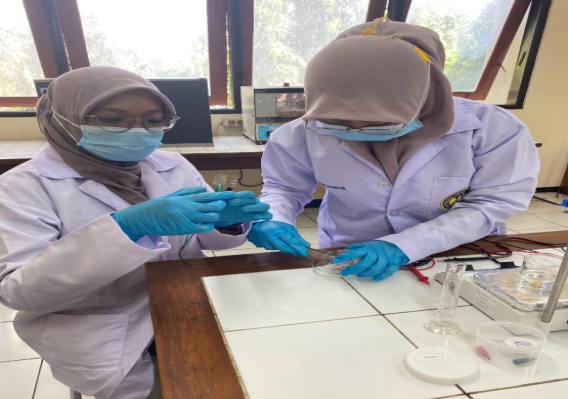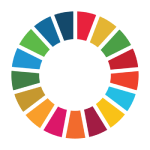Banana Peel Becomes an Eco-Friendly Innovation for Lead Detection in Water

A student team at Universitas Negeri Yogyakarta (UNY) has presented a unique innovation in safeguarding water quality by utilizing banana peel waste as the main material. Through a study titled “Green Synthesis Cu₂O/TiO₂ Nanotube Arrays (TNA) for Detection of Pb²⁺ Ions in Water”, the team succeeded in developing an environmentally-friendly technology capable of detecting the presence of the heavy metal lead (Pb²⁺) more efficiently and sustainably.
This innovation was born out of concern over increasing water pollution in Yogyakarta City. According to data from the local Environmental Agency (DLH) in 2024, the lead content in the Winongo, Gajah Wong and Code rivers rose significantly from 0.015 mg/L to 0.08 mg/L — exceeding the quality standard of 0.03 mg/L. This lead content, which is toxic and bio-accumulative, can threaten human health (particularly the nervous system and vital organs) as well as contaminate the food chain.
Motivated by these conditions, Bonita Arum Ningtyas (BSc Physics) alongside a team composed of Devita Amalia Zuhrida (BSc Physics), Martin Imanuel Panjaitan (BSc Physics), Kunnasywa Sani (BSc Chemistry), and Melda Novita Rahmadani (BSc Chemistry) conducted research to create a water sensor based on photocatalysis which is cheaper, more practical, and eco-friendly.
They replaced synthetic chemicals with natural polyphenol compounds from banana-peel as the reducing and stabilizing agents in the material synthesis process. “So far, methods to detect lead require chemical reagents and expensive equipment. We wanted to create a simpler method, based on natural materials that can be found around us,” explained Bonita, the team leader, on Wednesday (5/11/25).
In this research, banana peel from the “kepok” variety is processed into an extract rich in polyphenols which is then used to produce the Cu₂O/TNA material via an electro-deposition process. This material can absorb visible light and generate a photo-electrical response when reacting with lead ions in water, enabling early detection of Pb²⁺ with high accuracy.
In addition to being efficient, this green-synthesis approach also supports the circular economy principle by turning organic waste into a new high-value resource. Banana peels which are usually discarded now have the potential to become a solution to environmental and health problems.
This research is funded by the Ministry of Higher Education, Science, and Technology through the Student Creativity Programme in the Exact Sciences Research field (PKM-RE) for 2025, as a form of support for the development of innovative and sustainable research among students. The UNY team hopes the results of this research can be widely applied as a community water-quality monitoring system — especially in areas with high risk of pollution. “We hope this small contribution becomes a real step toward a sustainable water-monitoring technology,” added Devita.
This research also aligns with the Sustainable Development Goals (SDGs), specifically SDG 6: Clean Water and Sanitation, which emphasizes the importance of maintaining water quality for health and environmental sustainability, and SDG 12: Responsible Consumption and Production, which encourages the utilization of waste into valuable resources.
Through this innovation based on green technology, UNY once again demonstrates its commitment to building a generation of young scientists who are environmentally conscious, globally-minded, and oriented toward sustainability. Banana peel, once considered waste, now transforms into the key to scientific innovation for keeping water clean and safe for future generations.






